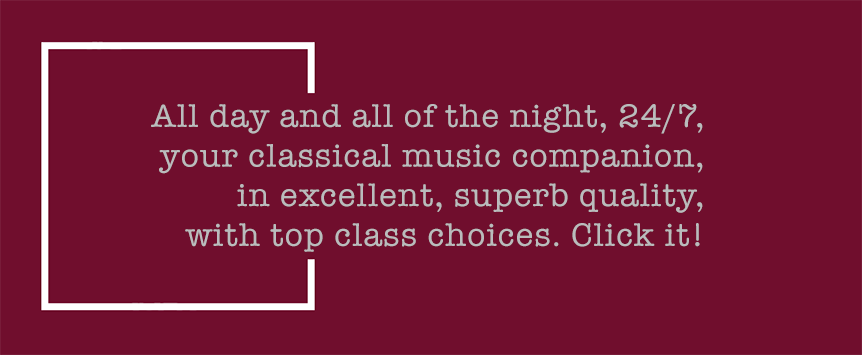Our resident critic has spent two nights at the opera:
When the full history of sin is written, I hope it attends to why so many artists of the nineteenth century paid such great attention to the importance of redemption. Sin had always been part and parcel of Christianity’s reading of human existence, but Romantic movement turned the idea of the soul being saved into an endeavour both epic and heroic.
Witness – among so many other works – Gounod’s opera “Faust” (1859, successively revised until 1869) and Wagner’s opera “Parsifal” (1882). “Faust”, once the most popular of all operas, has just revived to Covent Garden in a revival of its 2004 production by David McVicar: this will remain in repertory until June 10. “Parsifal” – the opera that George Christie had in mind when he first planned the Glyndebourne opera house in the early 1930s – has finally arrived there, in a new production that will remain in repertory until June 24. These two operas are light years apart in terms of sensibility.
Goethe’s poetic drama “Faust” (1808-1831) haunted world drama for decades, creating a cascade of operas, ballets, and other plays in its wake. The aged scholar Faust will sell his very soul to the devil for the experience he has lacked – in particular the experience of sexually romantic love. Gounod’s French opera is very lightweight by comparison, but it’s skilful in the way it gradually darkens and tightens its grip. I’m sorry not to have seen the Royal Opera production before. The company has fielded it over the years with excellent casts: in 2004, it began life with Antonio Pappano conducting Roberto Alagna (Faust), Angela Gheorghiu (Marguérite), Bryn Terfel (the devil Méphistophélès), Simon Keenlyside (Marguérite’s bother Valentin), and Sophie Koch (Siébel, Marguérite’s adolescent admirer). Nobody in the current cast is of that calibre. Carolina López Moreno (Marguérite) and Hongni Wu (Siébel) sing French as if it made no sense to them, let alone us. Stefan Pop (Faust) sings French communicatively, but his stage looks and deportment are never those of a Romantic hero. Adam Palka (Méphistophélès) and Boris Pinkhasovich (Valentin) are both good, though it’s a pity that Pinkhasovich chooses to sing unremittingly loudly. The conductor Maurizio Benini, whom I have admired in the past, turned the central love scene into slumberland.
Unusually among most modern productions of “Faust”, this one contains the Walpurgisnacht ballet that Gounod added to Act V. Originally choreographed by Michael Keegan-Dolan, now attributed to Emmanuel Obeya, it becomes here a nightmare vision of Marguérite’s guilty pregnancy, an initially pretty piece of Romanticism that turns grotesque. Though it must be far from what Gounod had in mind, it injects the sense of spiritual horror that until now has been lacking.
Much is wrong with the Glyndebourne “Parsifal” from the rise of the curtain. Wagner’s story is about the mediaeval keepers of the Holy Grail and about those, male and female, who struggle against sin in their pursuit of redemption; Wagner’s most beautiful stroke is in his suggestion that nature itself redeems, and that peace with nature is something. Jetske Mijnssen’s production is set in a single Victorian-era household with its own chapel (and dozens of retainers); it’s remarkable how wrong the indoor setting feels for “Parsifal”’s music. And her notion that the evil magician Klingsor is the misunderstood and banished brother of Amfortas, guardian of the Grail, is all too cosy: here, the Grail becomes family happy-family reconciliation.
It’s all wrong – you could compile a long list of all the stage directions that are contradicted here, with characters often addressing words to characters different from those intended by Wagner – but it’s all so well played that it’s also wonderful. The first big revelation of “Parsifal” at Glyndebourne is its sonic and acoustic immediacy: I think it teaches us why Wagner wanted bel canto singing in his operas, with not just flowing cantilena phrasing but pingingly bright vocal sonority that would tranform Wagner sound. (The memory of Matthew Rose’s Wotan in the English National Opera 2021 “Valkyrie” prompts me to suggest what a revelation his singing could be at Glyndebourne.)
The London Philharmonic Orchestra’s sound brings several revelations: the all-strings opening of the Act One overture resembles soft horn playing, a marvellous effect. The vocal sound of this “Parsifal” is a good spectrum of today’s conventional international Wagner style, with no weak links. John Relyea’s stentorian Gurnemanz is highly impressive, touchingly acted: it would be effective in an opera house with two or three times as many seats as Glyndebourne’s. (He sings at the New York Met and other big houses, as does Ryan Speedo Greene, who here is Klingsor. John Tomlinson, who plays the smaller role of their father Titurel, was one of the world’s foremost – and most Titanic – Wagnerian basses for forty years.) Daniel Johansson (Parsifal) and Kristina Stanek (Kundry) sang well enough, without any great interpretative insights, but physically played their scenes with an economical intimacy I have seldom found in Wagner. Too many modern Wagner stagings are marred by too much physical business: the idea is that the audience’s eye needs to be diverted by movement from the central drama. Although Mijnssen is wrong in her reading of what’s going on in “Parsifal”, she’s right in her trust in economy of motion and in sheer theatrical stillness.
Some advocates of opera claim that it’s a great art because so many arts – words, music, design, acting – combine in harmony towards one goal. More often than not, however, opera today is at its most remarkable when the opposite is true: when the words say one thing, the surtitles something else, the physical action a third thing, while the music may well be expressing one (or more than one) quite different set of meanings. You can find recent examples of this from Handel (Katie Mitchell’s “Theodora” and Oliver Mears’s “Jephtha”) to Wagner (this “Parsifal”). These are among the most multi-layered and intellectually challenging experiences in the theatrical arts today. How many different things are being said at the same time? And to what degree are they at odds with one another? Often we have to hold conflicting accounts in our heads at the same time as we watch and listen – and the effect can be to make us more complex and more deeply human.
@Alastair Macaulay , 2025
The post Alastair Macaulay: Where Faust and Parsifal come horribly unstuck appeared first on Slippedisc.







